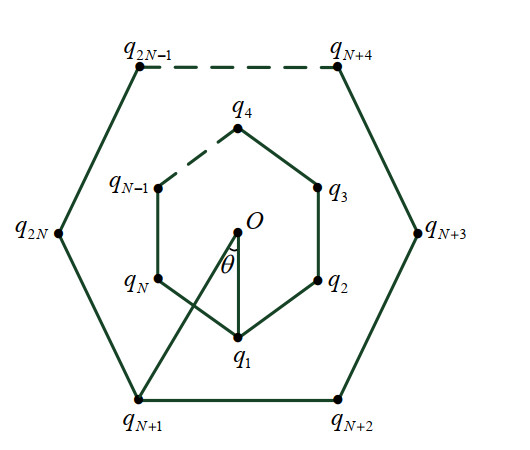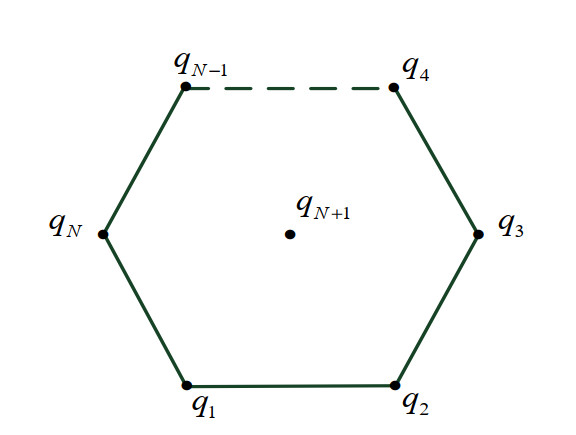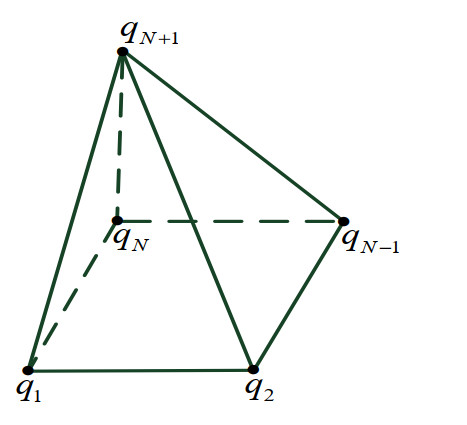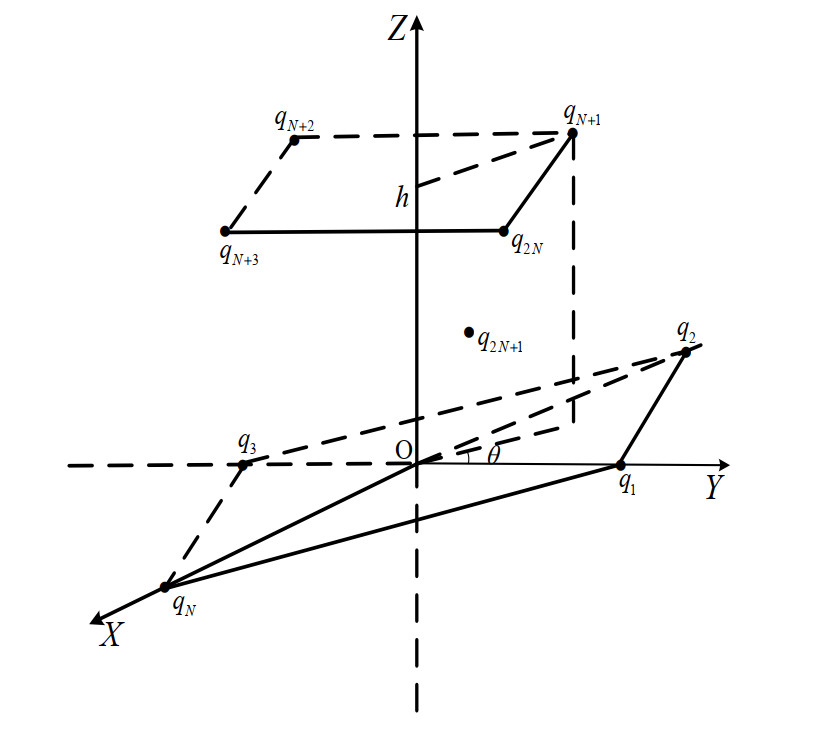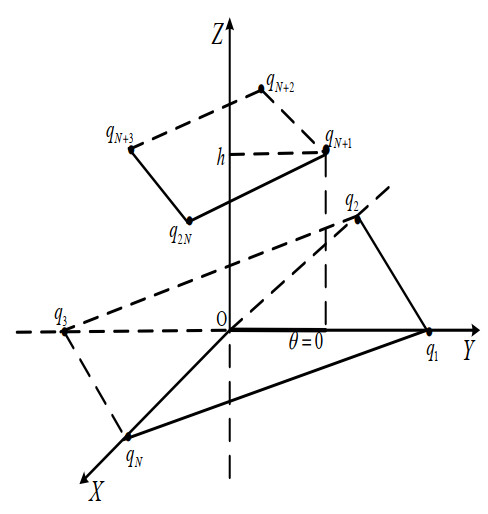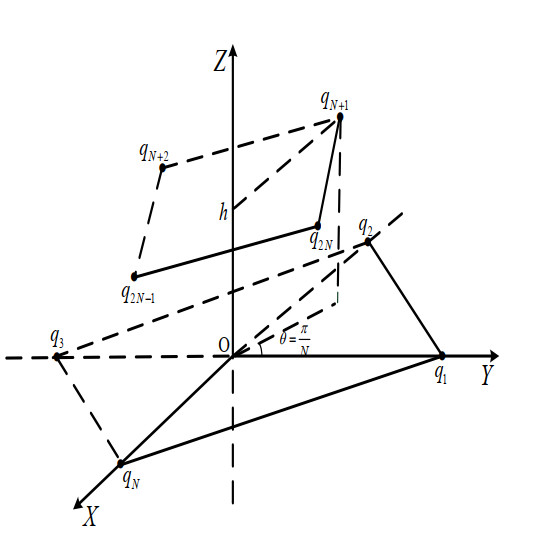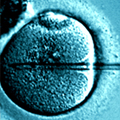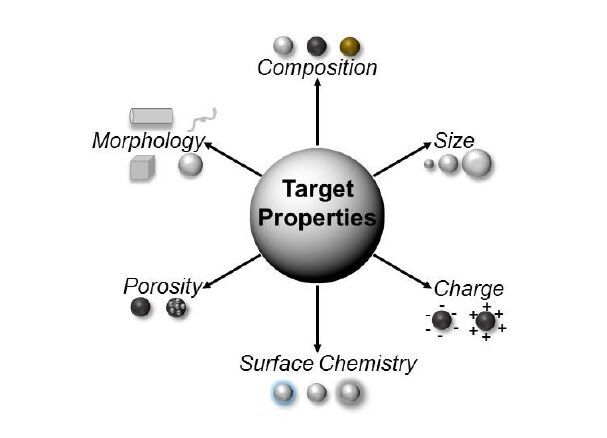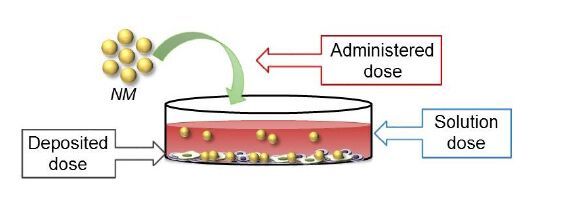The field of nanotechnology has grown exponentially in the last decade, due to increasing capabilities in material science which allows for the precise and reproducible synthesis of nanomaterials (NMs). However, the unique physicochemical properties of NMs that make them attractive for nanotechnological applications also introduce serious health and safety concerns; thus giving rise to the field of nanotoxicology. Initial efforts focused on evaluating the toxic potential of NMs, however, it became clear that due to their distinctive characteristics it was necessary to design and develop new assessment metrics. Through a prolific collaboration, engineering practices and principles were applied to nanotoxicology in order to accurately evaluate NM behavior, characterize the nano-cellular interface, and measure biological responses within a cellular environment. This review discusses three major areas in which the field of nanotoxicology progressed as a result of a strong engineering-biology partnership: 1) the establishment of standardized characterization tools and techniques, 2) the examination of NM dosimetry and the development of mathematical, predictive models, and 3) the generation of physiologically relevant exposure systems that incorporate fluid dynamics and high-throughput mechanisms. The goal of this review is to highlight the multidisciplinary efforts behind the successes of nanotoxicology and celebrate the partnerships that have emerged from this research field.
1.
Introduction
For the spatial Newtonian n-body problem, the equations of motion for the n masses mk>0 and positions xk∈R3 with k∈{1,…,n} can be described by Newton's second law and Newton's universal gravitation law:
Define
and let
be the collision set. As usual, the set Ω∖△ is called the configuration space. First, we introduce the definition of central configuration for the Newtonian n-body problem (see [1]).
Definition 1.1. Given n masses mk>0 with positions qk∈R3, k=1,…,n, we say a configuration q∈Ω∖△ is a central configuration at some moment if there exists a constant λ∈R such that
Central configurations play a very important role in the study of the Newtonian n-body problem, and especially, central configurations can lead to rigid-motion solutions and homothetically collapsing solutions [1]. Central configurations of the Newtonian three-body (n=3) problem with any given three masses have long been known, and there are always exactly two kinds of central configurations: Euler collinear central configuration and Lagrange equilateral-triangle central configuration [2,3]. For a planar Newtonian N-body problem with n=N≥4, Perko and Walter [4] proved that if N masses are located at the vertices of a regular N-polygon (see Figure 1), then they can form a regular polygonal central configuration if and only if all the values of N masses are equal to each other. For more results of planar central configuration with one regular N-polygon, one can refer to [5,6,7,8].
For a planar central configuration with n=2N and N≥2 such that two regular N-polygons are concentric and that 2N equal masses are placed at the vertices of the two regular N-polygons (see Figure 2), Zhang and Zhou [9] proved that the values of masses in each separate regular N-polygon were equal. We say that p regular N-polygons with p≥2 are nested if they are coplanar and have the same number of vertices N and the same center, and the positions of the vertices of the innermost regular N-polygon R(1)j and those of the remaining p-1 regular N-polygons R(k)j with any k∈{2,…,p} satisfy the relation that R(p)j=s1R(p−1)j=s2R(p−2)j=…=sp−1R(1)j for some scale factors sp−1>sp−2>…>s1>1 and for all j=1,2,…,N. For the central configuration such that two regular N-polygons are nested, masses on different regular N-polygons may be different, and Moeckel and Simó [10] proved that for every mass ratio b between the two masses, there were exactly two planar central configurations. Also, for the case of n=2N such that N equal masses are placed at the vertices of one regular N-polygon and the remaining N equal masses are placed at the vertices of the other regular N-polygon, which is rotated exactly at an angle θ=π/N with respect to the former regular N-polygon, Barrabés and Cors [11] proved the existence of the planar central configuration with any value of the mass ratio. For the case of n=pN and p≥2, Corbera, Delgado, and Llibre [12] proved the existence of the nested central configuration such that pN masses were at the vertices of the p nested regular N-polygon with a common center. Moreover, all the masses on the same regular N-polygon were equal, but masses on a different regular N-polygon could be different. For the case of n=pN+gN with p≥1 and g≥1, Zhao and Chen [13] proved the existence of planar central configurations such that p regular N-polygons were nested, and g regular N-polygons were rotated exactly at an angle π/N with respect to the other ones. For more details in this direction, we refer to [14,15,16,17,18,19,20,21] and the references therein.
Note that for a planar central configuration with n=N+1, Chen and Luo [22] proved that if N masses are located at the vertices of one regular N-polygon and the position of the (N+1)-th mass is on the plane containing the regular N-polygon (see Figure 3), then all the values of N masses located at the vertices of the regular N-polygon are equal to each other. For a spatial central configuration with n=N+1 and the (N+1)-th mass off the plane containing the regular N-polygon (see Figure 4), Ouyang, Xie, and Zhang [23] showed that the distance between the (N+1)-th mass and the regular N-polygon was unique.
In this paper, we consider the spatial central configuration of a Newtonian (2N+1)-body problem in R3 formed by 2N masses placed at the vertices of two paralleled regular N-polygons with distance h>0. It is assumed that the lower layer regular N-polygon lies in a horizontal plane, and the upper regular N-polygon parallels the lower one in R3 with distance h, and the z-axis passes through both centers of the two regular N-polygons (see Figure 5). For convenience, when choosing the coordinates, we treat R3 as the direct product of the complex plane and real axis. For the positions of the 2N+1 masses q=(q1,q2,…,q2N,q2N+1)∈Ω∖△, we have
where a is the ratio of the sizes of the two regular N-polygons, ρd is the d(modN)-th complex root of unity, i.e., ρk=eiθk with k=1,2,…,N, and ρl=eiθl with l=N+1,N+2,…,2N and θd=2dπ/N with d∈Z. Here, we define θ as the twist angle between the two paralleled regular N-polygons with distance h>0. Moreover, for the position of the (2N+1)-th mass and the barycenter x0=(c0,h0), we define
Then, for the spatial twisted configuration with n=2N+1 and the notations (1.2)–(1.3), we have the following results.
For the existence, we have the following:
Theorem 1.1. Suppose the values of N masses with N≥2 located at the vertices of one regular N-polygon are equal to each other, and all of the sides in the two regular N-polygons have the same size. Define the position of q2N+1 as (1.3). Then, the 2N+1 masses form a central configuration if and only if all the values of the 2N masses located at the vertices of the two regular N-polygons are equal to each other, a1=0 and h2N+1=h/2, and the twist angle is θ=sπ/N with s∈{0,1,…,2N−1}.
Remark 1.1. For the spatial twisted central configuration of the Newtonian 2N-body problem, under the assumption that the values of masses in each separate regular N-polygon were equal, Yu and Zhang [24] proved that the twist angle must be θ=0 or θ=π/N (see Figures 6 and 7). Meanwhile, in Theorem 1.1, we consider the spatial twisted central configuration of the Newtonian (2N+1)-body problem. Under the assumptions that the values of the N masses located at the vertices of one regular N-polygon are equal and that all of the sides in the two regular N-polygons have the same size, we not only obtain the values of the twist angle; but also prove that all 2N masses must be equal. Moreover, we know the position of the (2N+1)-th mass is (0,0,h/2).
For the uniqueness, we have the following:
Theorem 1.2. For the spatial twisted central configuration, if the values of the N masses located at the vertices of one regular N-polygon are equal to each other and all of the sides in the two regular N-polygons have the same size, then for any N≥2, both the distance between the two regular N-polygons and the position of the (2N+1)-th mass are unique.
2.
Preliminaries
Lemma 2.1. [24, Lemma 2.9] For any a>0, any γ∈(−∞,+∞), any h>0, and any N≥2, let
Then,
Remark 2.1. In Lemma 2.1, if we choose a=1 and γ=π/N where N≥2, then
Lemma 2.2. [24, Lemma 2.10] If γ∈(0,π/N) with N≥2, then for any a>0 and any h>0, we have f(γ)>0.
Lemma 2.3. If θ=sπ/N with s∈{0,1,…,2N−1} and N≥2, then for any k′∈{1,2,…,N}, any l′∈{N+1,N+2,…,2N}, and any h>0, we have
Proof. Let ˆμ∈{1,2,…,N}, ˜μ∈{0,1,…,N−1}, ˜α∈(−2π,2π), and κ∈{0,1}. We define a mapping σ by
Notice that both {κN+1,κN+2,…,κN+N} and {˜α,(2π)/N+˜α,…,2(N−1)π/N+˜α} are finite sets; the mapping σ is a surjection. Let us show σ is an injective mapping. The proof for κ=0 is similar to κ=1; we only check for κ=1. Let μ1≠μ2 and μ1,μ2∈{N+1,N+2,…,2N}. If σ(μ1)=σ(μ2), then there exist s1,s2∈Z such that
Hence, μ1−μ2=(s2−s1)N. By the facts that −N<μ1−μ2<N and s2−s1∈Z, s2=s1, and thus μ1=μ2, which is a contradiction. Therefore, σ is injective, which implies that σ is a bijection.
Similarly, for l∈{N+1,N+2,…,2N}, ˜s∈{0,1,…,N−1}, and θ∈[0,2π), if we define another mapping σ1 by
then σ1 is a bijection as well. Together with the fact that θ=sπ/N with s∈{0,1,…,2N−1} is equivalent to θ=2˜sπ/N or θ=2˜sπ/N+π/N with ˜s∈{0,1,…,N−1}, let us show (2.2) holds by considering the following two cases.
Case 1. θ=2˜sπ/N with ˜s∈{0,1,…,N−1}.
Observing that θj=2jπ/N with j∈{1,2,…,N},
which implies that
Let k′∈{1,2,…,N} and ˜s∈{0,1,…,N−1}. In (2.3), if we choose μ=l, ˆμ=k′, ˜μ=˜s, κ=1, and ˜α=0, then the mapping
is a bijection. Combining (2.6), and θd=2πd/N with d∈Z and
for any k′∈{1,2,…,N} and any ˜s∈{0,1,…,N−1}, we have
On the other hand, in (2.3), for any l′∈{N+1,N+2,…,2N} and any ˜s∈{0,1,…,N−1}, if we let μ=k, ˆμ=l′, ˜μ=N−˜s, κ=0, and ˜α=0, then we know that the mapping
is a bijection as well. Thus, similar to the procedure of obtaining (2.7), for any l′∈{N+1,N+2,…,2N}, any ˜s∈{0,1,…,N−1}, and any h>0, we have
Employing (2.7), (2.8), and θd=2πd/N with d∈Z, we have
and
where ˜s∈{0,1,…,N−1}, k′∈{1,2,…,N}, and l′∈{N+1,N+2,…,2N}. Thus, (2.2) holds for the case of θ=2˜sπ/N with ˜s∈{0,1,2,…,N−1}.
Case 2. θ=2˜sπ/N+π/N with ˜s∈{0,1,2,…,N−1}.
For any l′∈{N+1,N+2,…,2N} and any ˜s∈{0,1,…,N−1}, in (2.3), if we choose μ=k, ˆμ=l′, ˜μ=N−˜s, κ=0, and ˜α=−π/N, then the mapping
is a bijection. Then, we have
where ˜s∈{0,1,…,N−1}, l′∈{N+1,N+2,…,2N}, and h>0.
By the first equation of (2.9) and Remark 2.1, for any ˜s∈{0,1,…,N−1}, any l′∈{N+1,N+2,…,2N}, and any h>0, we see that
Moreover, in (2.5), for any l∈{N+1,N+2,…,2N} and any ˜s∈{0,1,…,N−1}, if we choose θ=π/N, then the mapping
is a bijection. Hence, combining (2.10), this leads to
Furthermore, one can verify that
and this implies that
Employing (2.9), (2.10), (2.11), and (2.12), for any l,l′∈{N+1,N+2,…,2N} and any ˜s∈{0,1,…,N−1}, we have
Thus, (2.2) holds for the case of θ=2˜sπ/N+π/N, where ˜s∈{0,1,2,…,N−1}.
By Cases 1–2, we arrive at the conclusion that (2.2) holds for θ=sπ/N with s∈{0,1,…,2N−1}. □
Remark 2.2. Similar to dealing with the mappings σ and σ1, for any k′∈{1,2,…,N} and any l′∈{N+1,N+2,…,2N} with N≥2, if one defines σ2 and σ3 by
and
then σ2 and σ3 are bijections.
Lemma 2.4. For any θ∈R, N≥2, a>0, h>0, and m>0, we have
Proof. In fact, (2.13) is equivalent to
It is easy to see that k−l′∈Z. Moreover, in (2.3), for any l′∈{N+1,N+2,…,2N} and any θ∈[0,2π), if we let μ=k, ˆμ=l′−N, ˜μ=0, κ=0, and α=θ, then the mapping
is a bijection, which implies that
Thus, Lemma 2.4 is true. □
Lemma 2.5. [4, Page 304] For any N≥2, ∑1≤j≤N−1(1−eiθj)/|1−eiθj|3=[∑1≤j≤N−1csc(jπ/N)]/4.
Lemma 2.6. [20, Pages 1431 and 1437] For any N≥2, the inequality
holds.
Now, we introduce the definition of circulant matrix and state its properties.
Definition 2.1. [25, Pages 65–66] A matrix ˜C=(˜ckj)N×N is circulant if ˜cˆk,ˆj=˜cˆk−1,ˆj−1 where 1≤k,j,ˆk,ˆj≤N and N≥2.
In Definition 2.1, we take the circulant matrix ˜C as the following:
We have some properties for the special circulant matrix C.
Lemma 2.7. [4, Page 303] The circulant matrix C has the same forms of the eigenvalues λj(C) and the corresponding eigenvectors ξj; more precisely,
where N≥2 and ρj−1=eiθj−1=e2(j−1)πi/N.
Lemma 2.8. [4, Corollary and Lemma 12] For the eigenvalues of C with j≠N and N≥4, λj≠0 except that λ(N+1)/2=0 for odd N.
Lemma 2.9. [22, Proposition 2.2] The eigenvectors ξj (j=1,2,…,N and N≥3) of circulant matrix C form a basis of CN.
Lemma 2.10. [25, Page 65] Denote the conjugate transpose of νk by (ˉνk)T. Then,
3.
Proof of Theorem 1.1
3.1. To prove the necessity
Let k′∈{1,2,…,N} and l′∈{N+1,N+2,…,2N}. By Definition 1.1, it suffices to study the following system:
Thanks to (1.2), (1.3), and (3.1), the 2N+1 masses form a central configuration if and only if
By the assumption that the values of N masses located at the vertices of one regular N-polygon are equal to each other, without loss of generality, we suppose that m1=m2=…=mN:=m>0, and we divide the proof of the necessity into four steps.
Step 1. We prove that a1=0.
Employing m1=m2=…=mN=m>0 and the second equation of (3.2), we have
where l′∈{N+1,N+2,…,2N}. Combining Lemma 2.4, (3.3),
and that λ is independent of the choice of l′, we deduce that
Thus, for any l′∈{N+1,N+2,…,2N}, we have |a1eiα−aei(θl′+θ)|2≡constant, i.e.,
Then, one computes that
Since a represents the ratio of the sizes of the two regular N-polygons, a>0. Hence, if a1≠0, then
In what follows, we assume that a1≠0, and we divide the proof of impossibility of a1≠0 into two cases: N=2 and N≥3.
(i) N=2:
In this case, l′∈{3,4}, and a1≠0. Then, by (3.4), we have cos(3π+θ−α)=cos(4π+θ−α), which implies that cos(θ−α)=0.
Under the assumption that m1=m2=m, we convert (1.2) and (1.3) into
First, in (2.3), for any θ∈[0,2π) and any l′∈{N+1,N+2,…,2N} with N≥2, if we let μ=k, ˆμ=l′−N, ˜μ=0, κ=0, and ˜α=−θ∈(−2π,0], then the mapping
is a bijection. Then, by the second equation of (3.2) and m1=m2=…=mN=m>0, we have
Note that all of the sides in the two regular N-polygons have the same size, and a represents the ratio of the sizes of the two regular N-polygons, so a=1. Choosing θl′=4π with l′=4, and then employing (3.6) with a=1 and N=2, we have
Combining N=2, (3.7) and the definition of circulant matrix C in (2.14),
where
M=(m3,m4)T, ˜ξ1=(1,1)T, and ˜ξ2=(ρ1,ρ21)T=(−1,1)T. Thus, we have
Then, by ρ−1=ρ−1+2=ρ1=−1, one computes that ˜b2=(m4−m3)/8.
On the other hand, by (3.5), we have
In addition, according to lines 1-8 of page 109 of [7], we have \lambda > 0 for Definition 1.1. Combining a\in\mathbb{R} and a_{1}\neq0 , one computes that Im(e^{i(\alpha-\theta)}) = 0 , i.e., \sin(\alpha-\theta) = 0 , which contradicts with \cos(\theta-\alpha) = 0 . Thus, \cos(\theta-\alpha) = 0 is impossible, which implies that for the spatial twisted central configuration with N = 2 , we deduce the conclusion that a_{1} = 0 .
(ii) N\geq3 :
For (3.4), if we let \beta = \theta-\alpha and choose l^{\prime} = N+1, N+2 , and N+3 , then
and this is equivalent to
Observing that N\geq3 , \sin(\pi/N)\neq0 , and \sin(2\pi/N)\neq0 . Combining with (3.8), we have
which implies that k_{1}\pi-3\pi/N = k_{2}\pi-4\pi/N . So, (k_{2}-k_{1})\pi = \pi/N where positive integer N\geq3 , and this is impossible. Therefore, (3.4) does not hold. Then, for the spatial twisted central configuration with N\geq3 , we arrive at the conclusion that a_{1} = 0 , too.
Step 2. We prove that \theta = s\pi/N with s\in\{0, 1, \ldots, 2N-1\} , and we divide the proof into two sub-steps.
Step 2.1. We show that m_{N+1} = m_{N+2} = \ldots = m_{2N} .
In fact, inserting a = 1 and a_{1} = 0 into (3.6), we have
Combining N\geq2 , m_{1} = m_{2} = \ldots = m_{N} = m , (3.9), \rho_{d} = e^{i\theta_{d}} with \theta_{d} = 2 d\pi/N and d\in \mathbb{Z} , along with the definition of circulant matrix C in (2.14),
where
M = (m_{N+1}, m_{N+2}, \ldots, m_{2N})^{T} , \xi_{1} = (1, 1, \ldots, 1)^{T} and \xi_{N} = (\rho_{N-1}, \rho^{2}_{N-1}, \ldots, \rho^{N}_{N-1})^{T} .
In the following, we divide the proof of m_{N+1} = m_{N+2} = \ldots = m_{2N} into three cases: N = 2 , N = 3 , and N\geq4 .
(i) N = 2 :
By (3.10) with N = 2 ,
Moreover, when N = 2 , it is easy to see that \rho_{1}+\rho_{2} = 0 and \rho_{-1} = \rho_{1} = -1 . Thus,
which implies that b_{2} = (m_{4}-m_{3})/8 . Thus, when N = 2 , then inserting \rho_{3} = -1 , and \rho_{4} = 1 into (3.11) and combining with b_{2} = (m_{4}-m_{3})/8 , we have
In what follows, we prove that for the spatial twisted central configuration with N = 2 , m_{3} = m_{4} , and we prove it by contradiction. We assume m_{3}\neq m_{4} .
In fact, on the one hand, by m_{3}\neq m_{4} , m_{1} = m_{2} = m , and (3.12), we have
Moreover, thanks to N = 2 , a = 1 , a_{1} = 0 , and the fourth equation of (3.5), one computes that
Summing the equations of the first part of (3.2) over k^{\prime} = 1 and k^{\prime} = 2 , by N = 2 , a_{1} = 0 , m_{1} = m_{2} = m , (3.13), and (3.14), we have
Then, combining e^{i\theta_{1}} = e^{i\theta_{-1}} = -1 ( N = 2 ), we have
i.e., m_{3} = m_{4} , and this contradicts with the assumption that m_{3}\neq m_{4} . Hence, for the spatial twisted central configuration with N = 2 , we deduce that m_{3} = m_{4} .
(ii) N = 3 :
By (3.10),
From N = 3 , we have \rho_{-1} = \rho_{2} and \rho_{-2} = \rho_{1} ; thus, \rho_{1}+\rho_{2}+\rho_{3} = 0 . Together with (3.15) and
there is
which implies that b_{1}\in\mathbb{R} .
On the other hand, for N = 3 , Lemma 2.9 gives us information that there exist constants c_{1} , c_{2} , and c_{3} such that M = c_{1}\xi_{1}+c_{2}\xi_{2}+c_{3}\xi_{3} where M = (m_{4}, m_{5}, m_{6})^{T} . Thus, combining (3.10), we obtain
Then, it follows from (3.16) and Lemma 2.9 that c_{1}\lambda_{1}(C)\xi_{1} = b_{1}\xi_{1} and c_{3}\lambda_{3}(C)\xi_{3} = -b_{2}\xi_{3} .
Employing Lemma 2.5, Lemma 2.7, \rho_{3} = 1 , \rho_{4} = \rho_{1} , \rho_{1}+\rho_{2} = -1 , and |1-\rho_{1}| = |1-\rho_{2}| , we have
Then, thanks to b_{1}\in\mathbb{R} , \xi_{1} = (1, 1, \ldots, 1)^{T} , and c_{1}\lambda_{1}(C)\xi_{1} = b_{1}\xi_{1} , one computes that c_{1}\in\mathbb{R} . In what follows, we will prove that c_{2}\in\mathbb{R} and c_{3}\in\mathbb{R} .
By \xi_{1} = (\rho_{0}, \rho_{0}, \rho_{0}) , \xi_{2} = (\rho_{1}, \rho_{2}, \rho_{3}) , \xi_{3} = (\rho_{2}, \rho_{1}, \rho_{3}) , and M = c_{1}\xi_{1}+c_{2}\xi_{2}+c_{3}\xi_{3} with N = 3 , we have
Based upon \rho_{0} = \rho_{3} = 1 , c_{1}\in\mathbb{R} , and the third equation of (3.18), we have c_{2}+c_{3}\in\mathbb{R} .
Employing \rho_{0} = 1 , c_{1}\in\mathbb{R} , and the first equation of (3.18), we see that c_{2}\rho_{1}+c_{3}\rho_{2}\in\mathbb{R} . Note that
and then c_{2} = c_{3} . Therefore, with the help of c_{2}+c_{3}\in\mathbb{R} , we have c_{3}\in\mathbb{R} .
In virtue of (3.17), \lambda_{3}(C)\in\mathbb{R} . Moreover, combining c_{3}\in\mathbb{R} and c_{3}\lambda_{3}(C)\xi_{3} = -b_{2}\xi_{3} where \xi_{3} = (\rho_{2}, \rho_{4}, \rho_{6})^{T} = (\rho_{2}, \rho_{1}, \rho_{3})^{T} , one computes that b_{2}\in\mathbb{R} .
By now, for (3.15), by the accumulated facts b_{1}\in\mathbb{R} , b_{2}\in\mathbb{R} , |1-\rho_{1}| = |1-\rho_{2}| , \rho_{-1} = \rho_{2} , \rho_{-2} = \rho_{1} , and Im(\rho_{1}) = -Im(\rho_{2}) , we have m_{4} = m_{5} = m_{6} .
(iii) N\geq4 :
Lemma 2.9 gives us information that there exist constants \tilde{c}_{1}, \tilde{c}_{2}, \ldots, \tilde{c}_{N} such that M = \tilde{c}_{1}\xi_{1}+\tilde{c}_{2}\xi_{2}+\ldots+\tilde{c}_{N}\xi_{N} where M = (m_{N+1}, m_{N+2}, \ldots, m_{2N})^{T} . We can regard (3.10) as (3.11) of [26]; moreover, we regard C , b_{1} , and b_{2} of this paper as A_{\alpha} , \sum_{k = 1}^{N}m_{k} , and \sum_{k = 1}^{N}m_{k}q_{k} of [26], respectively. Then, combining N\geq4 and Lemmas 2.8–2.10, similar to the procedure of Case 2.1 on pages 6–7 of [26], we obtain m_{N+1} = m_{N+2} = \ldots = m_{2N} .
Step 2.2. Based on Step 1 and Step 2.1, we prove that \theta = s\pi/N with s\in\{0, 1, \ldots, 2N-1\} .
Inserting m_{1} = m_{2} = \ldots = m_{N} , a_{1} = 0 , and m_{N+1} = m_{N+2} = \ldots = m_{2N} into the second equality of (1.3), we have c_{0} = 0 . Then, with the help of the first equation of (3.2), for any k^{\prime}\in\{1, 2, \ldots, N\} , we obtain
For any k^{\prime}\in\{1, 2, \ldots, N\} , it follows from Remark 2.2 that the mapping
where
is a bijection. Thus, by the procedure of obtaining (2.6), and \theta_{d} = 2\pi d/N with d\in \mathbb{Z} , we have
and then
Combining (3.19) with (3.21), we have
For any l\in\{N+1, N+2, \ldots, 2N\} , in (2.5), if we let \tilde{s} = 0 , then the mapping
is a bijection, too. Hence, we have
Using the definition of f(\theta) in (2.1), (3.22), and the second equation of (3.23), we can see that
On the one hand, if \theta\in(2\tilde{s}\pi/N, \, 2\tilde{s}\pi/N+\pi/N) where \tilde{s}\in\{0, 1, \ldots, N-1\} , then by Lemmas 2.1-2.2, there is f(\theta) > 0 , which contradicts (3.24).
On the other hand, if \theta\in(2\tilde{s}\pi/N+\pi/N, \, 2\tilde{s}\pi/N+2\pi/N) where \tilde{s}\in\{0, 1, \ldots, N-1\} , then by Lemma 2.1, we have f(\theta) = -f(-\theta) = -f(-\theta+2\pi/N) and -\theta+2\pi/N\in(-2\tilde{s}\pi/N, \, -2\tilde{s}\pi/N+\pi/N) . Therefore, it follows from Lemma 2.2 that f(\theta) < 0 , which also contradicts (3.24).
Thus, combining \theta\in[0, \, 2\pi) , we conclude that the twist angle must be \theta = 2\tilde{s}\pi/N or \theta = 2\tilde{s}\pi/N+\pi/N with \tilde{s}\in\{0, 1, \ldots, N-1\} , and then \theta = s\pi/N with s\in\{0, 1, \ldots, 2N-1\} .
Step 3. We show that m_{1} = m_{2} = \ldots = m_{N} = m_{N+1} = m_{N+2} = \ldots = m_{2N} .
Based on the first part of Step 2, we can assume that m_{N+1} = m_{N+2} = \ldots = m_{2N}: = bm where constant b > 0 . By the assumption that m_{1} = m_{2} = \ldots = m_{N}: = m , it suffices to show that the value of b can only take b = 1 , and we prove it by contradiction. We assume that b\neq1 .
Thanks to a = 1 , m_{1} = m_{2} = \ldots = m_{N}: = m , a_{1} = 0 , and m_{N+1} = m_{N+2} = \ldots = m_{2N}: = bm , for (3.2) we have
where k^{\prime}\in\{1, 2, \ldots, N\} and l^{\prime}\in\{N+1, N+2, \ldots, 2N\} . Combining the first and second equations of (3.25) with (2.7),
Let
Thus, (3.26) can be simplified into
On the one hand, by (3.28), we see that
and
Then, it follows from (3.29), (3.30), and b\neq1 that
Thus,
Combining with
we have
which implies that (1+b)h_{2N+1} = bh . Moreover, with the help of (3.31), one computes that h_{0} = h_{2N+1} . Then, it follows from the second equation of (3.29) that x = -by . Hence, with the aid of (3.27) and (1+b)h_{2N+1} = bh , we have
that is, b = \pm1 , which contradicts b > 0 and the assumption b\neq1 . So, b = 1 , and we arrive at the conclusion that m_{1} = m_{2} = \ldots = m_{N} = m_{N+1} = m_{N+2} = \ldots = m_{2N} .
Step 4. We prove that h_{2N+1} = h/2 .
In virtue of (3.30), we have
Note that lines 1–8 of page 109 of [7] show us that in Definition 1.1, \lambda must be a positive number. Then, combining the last equality of (1.3) and m_{1} = m_{2} = \ldots = m_{N} = m_{N+1} = m_{N+2} = \ldots = m_{2N} = m ,
which implies that N = 1 or h = 2h_{2N+1} . Combining with N\geq2 , for the spatial twisted central configuration, we have h_{2N+1} = h/2 . □
Remark 3.1. The proof of Step 1 is independent of the condition that a = 1 . That is, for the twisted central configuration of the ( 2N +1)-body problem with the assumption that m_{1} = m_{2} = \ldots = m_{N} , and without the assumption that a = 1 , we have a_{1} = 0 . That is, the ( 2N +1)-th mass must be in the vertical line of the two paralleled planes containing the two regular N -polygons, respectively, and the vertical line segment passes through the geometric centers of the two regular N -polygons.
3.2. To prove the sufficiency
We divide the proof into two steps.
Step 1. Based on the assumptions that \theta = s\pi/N with s\in\{0, 1, \ldots, 2N-1\} , a = 1 , h_{2N+1} = h/2 , a_{1} = 0 , and m_{1} = m_{2} = \ldots = m_{N} = m_{N+1} = m_{N+2} = \ldots = m_{2N} = m , we show that if there exists a constant \lambda\in\mathbb{R} such that
then the 2N +1 masses can form a central configuration.
In fact, by (1.3), in this situation we get
Employing a = 1 , h_{2N+1} = h/2 , a_{1} = 0 , m_{1} = m_{2} = \ldots = m_{N} = m_{N+1} = m_{N+2} = \ldots = m_{2N} = m , (3.33) and
we see that (3.2) holds if and only if
Therefore, it suffices to verify (3.34) holds. Clearly, (3.34) is equivalent to
On the other hand, for any l^{\prime}\in\{N+1, N+2, \ldots, 2N\} , it follows from Remark 2.2 that the mapping
where
is a bijection. Thus, by \theta_{d} = 2\pi d/N with d\in \mathbb{Z} , we have
Together with (3.20), for any k^{\prime}\in\{1, 2, \ldots, N\} and any l^{\prime}\in\{N+1, N+2, \ldots, 2N\} , it follows that
Employing Lemma 2.3, (3.35), and (3.36), we conclude that if there exists a constant \lambda\in\mathbb{R} such that (3.32) holds, then by Definition 1.1, the 2N +1 masses form a central configuration.
Step 2. We prove the existence of the spatial twisted central configuration, i.e., we prove the existence of \lambda of Step 1.
Define the function g as follows:
where h > 0 and \theta = s\pi/N with s\in\{0, 1, \ldots, 2N-1\} . Thanks to Lemmas 2.3, 2.5, and (3.37), we see that g(h)\in\mathbb{R} , which implies that
In what follows, we prove that there exists h = \bar{h}(N) such that g(\bar{h}(N)) = 0 . Note that \theta = s\pi/N with s\in\{0, 1, \ldots, 2N-1\} is equivalent to \theta = 2\tilde{s}\pi/N or \theta = 2\tilde{s}\pi/N+\pi/N with \tilde{s}\in\{0, 1, \ldots, N-1\} . We divide the following proof into two cases.
Case 1. \theta = 2\tilde{s}\pi/N with \tilde{s}\in\{0, 1, \ldots, N-1\} .
On the one hand, since m > 0 , \theta = 2\tilde{s}\pi/N , and 1+\cos\theta_{j}\geq0 with j\in\mathbb{Z} , we have
Moreover, if h\rightarrow0^{+} , then
which implies that when the twist angle is \theta = 2\tilde{s}\pi/N with \tilde{s}\in\{0, 1, \ldots, N-1\} , there exists h = h_{1}(N) such that g(h_{1}(N)) < 0 .
On the other hand, notice that if h\rightarrow +\infty , then
Then, by (3.38)–(3.39), we see that when the twist angle is \theta = 2\tilde{s}\pi/N with \tilde{s}\in\{0, 1, \ldots, N-1\} , there exists h = h_{2}(N) such that g(h_{2}(N)) > 0 .
Hence for the case of \theta = 2\tilde{s}\pi/N with \tilde{s}\in\{0, 1, \ldots, N-1\} , employing the fact that g is a continuous function, there exists h = \bar{h}(N) such that g(\bar{h}(N)) = 0 .
Case 2. \theta = 2\tilde{s}\pi/N+\pi/N with \tilde{s}\in\{0, 1, \ldots, N-1\} .
In this case, by (3.38), \tilde{s}\in\{0, 1, \ldots, N-1\} , and \theta_{d} = 2\pi d/N with d\in \mathbb{Z} , we have
Then, it follows from (3.40) and Lemma 2.5 that
If h\rightarrow0 , then with the help of (3.41) and Lemma 2.6, \lim_{h\rightarrow0}g(h) < 0 , which implies that when the twist angle is \theta = 2\tilde{s}\pi/N+\pi/N with \tilde{s}\in\{0, 1, \ldots, N-1\} , there exists h = h_{3}(N) such that g(h_{3}(N)) < 0 .
On the other hand, if h\rightarrow +\infty , then
which implies that when the twist angle is \theta = 2\tilde{s}\pi/N+\pi/N with \tilde{s}\in\{0, 1, \ldots, N-1\} , there exists h = h_{4}(N) such that g(h_{4}(N)) > 0 .
Therefore, for the case of \theta = 2\tilde{s}\pi/N+\pi/N with \tilde{s}\in\{0, 1, \ldots, N-1\} , combining with the continuity of function g , there exists h = \bar{h}(N) such that g(\bar{h}(N)) = 0 .
By now, Cases 1–2 show us that when \theta = s\pi/N with s\in\{0, 1, \ldots, 2N-1\} , there exists h = \bar{h}(N) such that g(\bar{h}(N)) = 0 , which implies that
Moreover, note that
Then, there is a constant \lambda\in\mathbb{R} such that
i.e.,
which implies that there exists a constant \lambda\in\mathbb{R} such that (3.32) holds. Then, by Step 1, the 2N +1 masses form a central configuration. □
4.
Proof of Theorem 1.2
For the spatial twisted central configuration, (3.2) holds. Moreover, note that m_{1} = m_{2} = \ldots = m_{N} = m and a = 1 . Then, all the assumptions of Theorem 1.1 are satisfied, so we have a_{1} = 0 , h_{2N+1} = h/2 , and m_{1} = m_{2} = \ldots = m_{N} = m_{N+1} = \ldots = m_{2N} = \, m . Thus, c_{0} = 0 , h_{0} = h/2 , and q_{2N+1} = (0+0i, h/2) . Thus, in the following, it suffices to prove the uniqueness of h .
In fact, by (3.36) and the first equation of (3.2), for any k^{\prime}\in\{1, 2, \ldots, N\} and any l^{\prime}\in\{N+1, N+2, \ldots, 2N\} , one computes that
where h > 0 and \theta\in[0, 2\pi) . Hence, it follows from Lemma 2.3 that
Let
Combining \lambda\in\mathbb{R} , h\in\mathbb{R} , (4.1), and (4.2), we have
which implies that
and then we obtain \bar{x} = \bar{y}(h)+\bar{z}(h) . Hence, if the 2N +1 masses form a central configuration, then the distance h must satisfy that \bar{x} = \bar{y}(h)+\bar{z}(h) . Next, we prove the uniqueness of the distance h .
We take G(h) = \bar{y}(h)+\bar{z}(h)-\bar{x} for h > 0 , and by (4.2), it is easy to verify that G^{\prime}(h) < 0 . Moreover, note that m_{1} = m_{2} = \ldots = m_{N} = m and a = 1 . Then, employing Theorem 1.1, we obtain that the existence of the central configuration implies that \theta = s\pi/N with s\in\{0, 1, \ldots, 2N-1\} holds. Then, due to the rotational symmetry of the central configuration, in order to prove Theorem 1.2, it suffices to consider the following two cases: \theta = 0 and \theta = \pi/N .
Case 1. \theta = 0 .
Lemma 2.5 shows that
and then by (4.2),
Employing (4.3), one verifies that there exist a small enough constant h = \bar{h} > 0 and a big enough constant h = \tilde{h} > 0 such that G(\bar{h}) > 0 and G(\tilde{h}) < 0 . Then, combining the continuity and monotonicity of function G , for the case of \theta = 0 , there is a unique h = \hat{h} > 0 , such that G(\hat{h}) = 0 , i.e., \bar{x} = \bar{y}(\hat{h})+\bar{z}(\hat{h}) .
Case 2. \theta = \pi/N .
Employing (4.2), we have
By Lemma 2.6, \lim_{h\rightarrow0}G(h) > 0 . Furthermore, by Lemma 2.5, we see that \lim_{h\rightarrow +\infty}G(h) < 0 . Thus, for the case of \theta = \pi/N , due to the continuity and monotonicity of function G , there is a unique h = \breve{h} > 0 , such that G(\breve{h}) = 0 , i.e., \bar{x} = \bar{y}(\breve{h})+\bar{z}(\breve{h}) .
Based upon Cases 1–2, there exists only one h > 0 such that \bar{x} = \bar{y}(h)+\bar{z}(h) , i.e., there is only one h > 0 such that the 2N +1 masses form a central configuration. Moreover, combining the other two conclusions that a_{1} = 0 and h_{2N+1} = h/2 , we obtain that q_{2N+1} = (a_{1}e^{i\alpha}, h_{2N+1}) is unique, i.e., there are only one positive distance h between the two paralleled regular N -polygons and only one position q_{2N+1} of the ( 2N +1)-th mass such that the 2N +1 masses form a central configuration. □
Use of AI tools declaration
The authors declare they have not used Artificial Intelligence (AI) tools in the creation of this article.
Acknowledgments
The authors sincerely thank the referees and the editors for their valuable comments and suggestions, and the authors also express their sincere gratitude to professor Shiqing Zhang for his helpful discussions and suggestions. This work was supported by the National Natural Science Foundation of China (Grant Nos. 12361022 and 12371163), the China Postdoctoral Science Foundation (Grant No. 2021M700968), the Guizhou Provincial Basic Research Program (Natural Science, Grant Nos. ZK[2021]003 and ZK[2023]138), and the Natural Science Research Project of the Department of Education of Guizhou Province (Grant No. QJJ2022047).
Conflict of interest
The authors declare there is no conflict of interest.
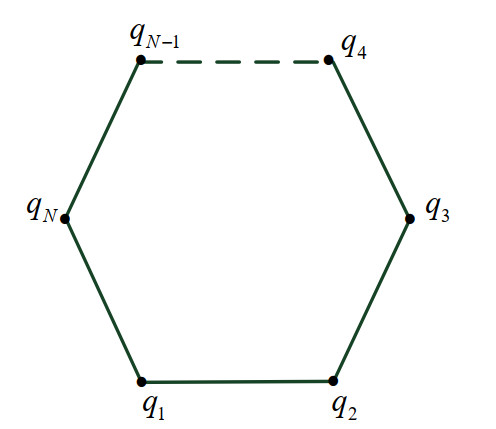









 DownLoad:
DownLoad:
